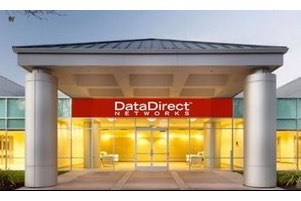 While there has been a lot of disagreement about the slowing of Moore’s Law as of late, it is clear that the industry is looking at new ways to speed up HPC by focusing on the data side of the equation. With the advent of burst buffers, co-design architectures, and new memory hierarchies, the one connecting theme we’re seeing is that Moving Data is a Sin.
While there has been a lot of disagreement about the slowing of Moore’s Law as of late, it is clear that the industry is looking at new ways to speed up HPC by focusing on the data side of the equation. With the advent of burst buffers, co-design architectures, and new memory hierarchies, the one connecting theme we’re seeing is that Moving Data is a Sin.
In terms of storage, which technologies will take hold in the coming year? DDN offers us these 2016 Industry Trends & Predictions:
- Hyper-converged storage solutions will gain market traction. The new components that drive speed and density are advancing quickly but today’s solutions aren’t keeping pace. Storage and server architectures based on decade-old technologies, retrofitted to include next-generation processors, interconnects and technologies are rife with performance bottlenecks, reliability challenges, complexity and an inherent need for over provisioning. In 2016, storage will take the lead on converging the newest components into a “hyper-converged” infrastructure platform that takes full advantage of advanced technologies to drive the highest performance and lowest latency in a form factor that is extremely efficient, easy to maintain and that will scale without bound.
- Optimized storage hardware will come back in fashion. Flash is being used to increase performance for many enterprise workloads. A lot of end users are embracing this flash based solution, while ignoring the cost efficiency side of the equation. Maximizing efficiency and performance of flash requires the optimization of hardware as well as software. In 2016 organizations will increasingly recognize the importance and necessity of purpose-built architectures to encompass greater efficiency and exploit the full capabilities of their expensive flash investments.
- HPC technologies will continue to move into commercial, enterprise environments. Storage, data management and application acceleration technologies from the high performance computing (HPC) industry will continue being tapped at even a higher rate in 2016 to meet the evolving requirements of performance and scale and will replace traditional IT infrastructures at even a higher rate. As large scale commercial enterprises learn ever more from the successes of early pioneers in the adoption of HPC technology into enterprise to solve a myriad of challenges including rapidly growing data sets, “Big Data” democratization, analytics initiatives, and data sharing across geographies, they will accelerate their adoption of storage solutions that historically have almost exclusively been deployed in supercomputing labs.
- End-to-end, consolidated storage systems will be deployed at even higher rates. As storage buyers look to achieve performance, capacity and cost objectives they increasingly do so by consolidating storage silos into much larger, shared data depots or data lakes. These will be automated, tiered systems that will handle data across a wide and increasingly varied set of applications, including the ability to ingest, process and archive data from multiple locations in a single, unified namespace. Environments where this preference will be particularly pronounced include Finance, Life Science, Manufacturing, Video Surveillance and Oil & Gas.
- The storage industry landscape will continue to collapse and converge. Convergence is not just about hardware and software merging – IT suppliers will be consolidating more as well in 2016 into more super behemoths. This consolidation and convergence of companies will have a negative impact on their existing customers – for this reason 2016 will see privately-owned, cutting edge storage companies take a much bigger mindshare as they provide more focus, innovation and value to buyers.
- Flash will blur the line between caching and storage. Flash will increasingly be placed outside of the storage array and closer to compute to further reduce latency and increase application performance by orders of magnitude. This move will further blur the line between caching and storage, as the flash layer will naturally become more persistent as performance-intensive applications rely upon this ultra-fast tier to deliver results at speeds that outpace their competition.
- Flash media types will proliferate and more emphasis will be placed on architectures that support and optimize them. Organizations are deploying flash to accelerate application and I/O performance. Storage vendors will have to look beyond applications and accelerate entire workflows – which means selecting very specific flash media, whether that be NVM, PCIe, SSD, etc.
What are your thoughts? Please share in the comments.
Sign up for our insideHPC Newsletter



